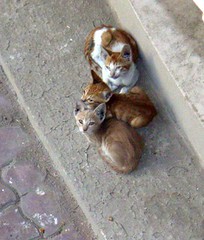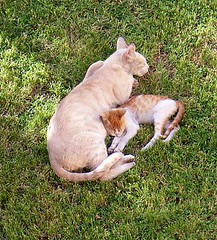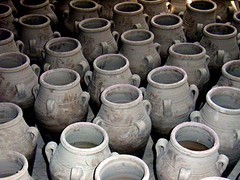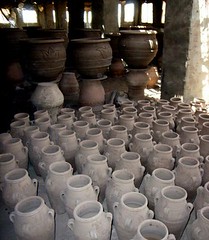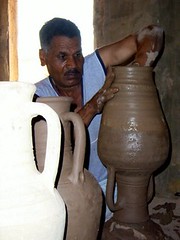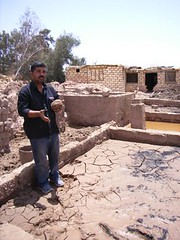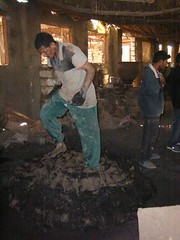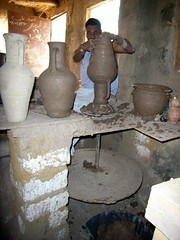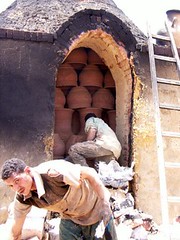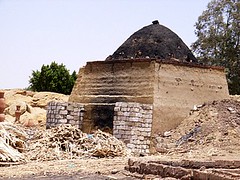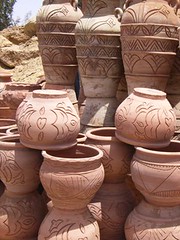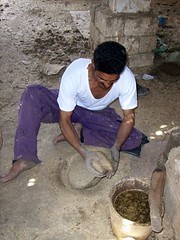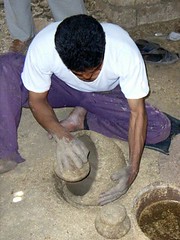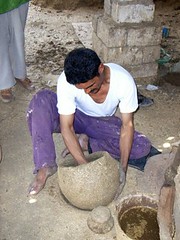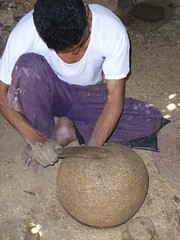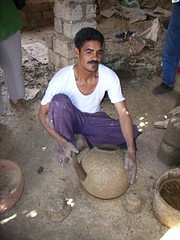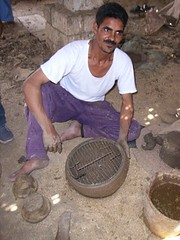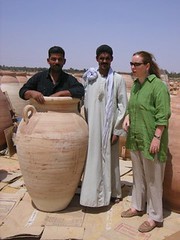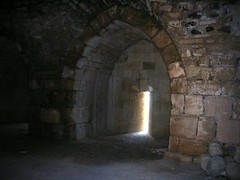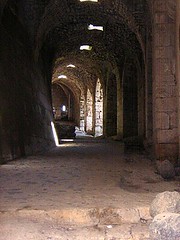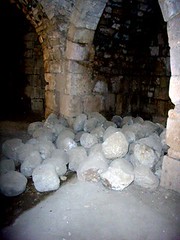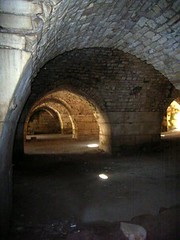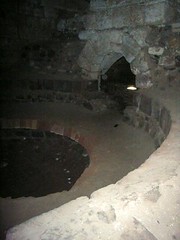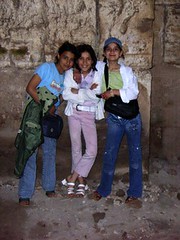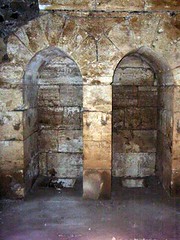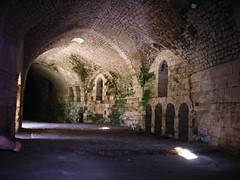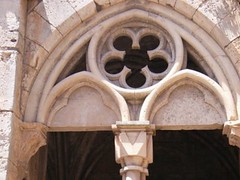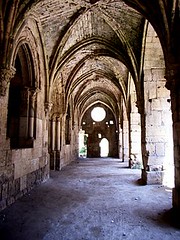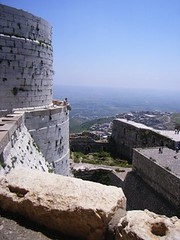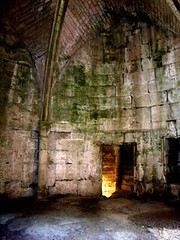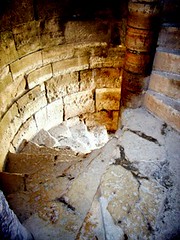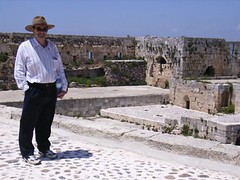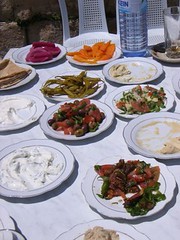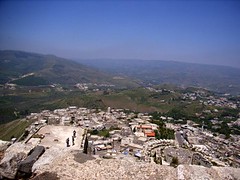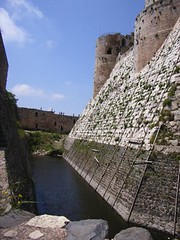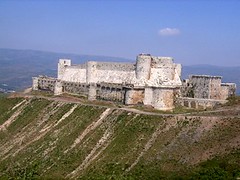Meeting the First Lady
 Wednesday, May 18, 2005 at 11:09AM
Wednesday, May 18, 2005 at 11:09AM Last night I went to the palace.
I love those first seven words. As one of my friends said on hearing them “as I say all the time…”, but then she has a very sharp, sometimes even sarcastic, sense of humour....
You know, none of this is routine for me either. I can still be awed by the week I have had. Life here is all ups and downs. A present I had bought for my son’s birthday was deemed too heavy for the diplomatic bag, so he will not have any mail from me. It sounds like nothing, but I am miserable about it. It is odd that such small things can take on a huge importance. I had assumed that we were permitted the same two kilos going out of the post that we are allowed to bring in – but we are not permitted any parcels at all!
However, the up-side is enormous. Not only the privilege of living in another country and learning its ways, but the amazing gift of moving in circles that would be inaccessible to the graying, middle-aged, overweight lady who quilts and lives in Garran, in Canberra, in an ordinary suburban home with a husband who works for the government, two adult children, a cat, a dog, and three chooks. I sometimes feel as if I will find that it has all been a mistake, and that someone important was meant to come here.
I guess that also means that maybe other people in high places occasionally wonder too if they came sideways off life’s trampoline.
Last night I went to the Palace to meet Mrs Mubarak. She had invited all the male Ambassador’s wives, and many of the Egyptian ministers who were female to come to a reception. We were to arrive an hour early. For things like this I use an Embassy driver, and because we are often short of cars and drivers at the Embassy, Bob came home early so I could use his driver.
The invitation was for 7.00pm so I left here at 5.00pm. It takes nearly an hour to drive to Heliopolis at this time, though it is actually not all that far.
We walked through a security gate, just like the ones at airports. In fact, you do this at every hotel here, and usually a handbag has to be handed over and is quickly searched. It often amazes me though, that many women here wear such large amounts of jewelery that the security barriers frequently bleep. At the palace bleeps were taken seriously. My mobile and camera (why did I take that with me – how dumb can you get?) were taken out of my bag, and I was given a number for them. Later someone searched for me and returned the mobile. I think they probably realised that it doesn’t take photos.
We were given a card with a number on it and shown into a small side reception room.
These rooms were stunning. All the floors were marble, but laid with beautiful Persian carpets, most in the Nain and Isfahan style which is predominantly blue and cream and aqua. The ceilings were very high, and trimmed with inlaid stone work in many traditional patchwork patterns around the edges. Furniture here tends to me more ornate than in Australia. Wooden parts are elaborately carved and gold leafed, and the upholstery often in satins and flocked velvets. There is an effect of pattern on pattern on pattern. This was sumptuous, but most of the colours were light, in the creams, green, aqua and blue ranges, so though it was rich it was not heavy.
At about 6.30, when most of us had been there for about half an hour, we were taken into a much larger reception area. This was very high, with an open central area and two floors, so one was a mezzanine that wrapped right around the main room. The balcony was all marble, but very heavily veined in olive and deep green. It had an inlaid stone border that went right around the room which was just exquisite, about six patchwork patterns on top of each other in cream and tan and terracotta and black. Add to this a beautiful piece of edgework that dropped like a hand stitched lace edging below the balcony – but was all carved white stone. Most of the furniture in this room was striped gold and white, still with the gold leaf covering on the arms and legs, so it was rich but subtle and oddly not over the top for such a huge and stately room. We were served fresh juices, orange, lemon, strawberry (still my favourite), guava and mango.
A few minutes before seven doors were opened in the hall outside. Mrs Mubarak arrived with escort vehicles. She is slim and attractive, and looks in her fifties or younger, though my mathematics tells me that that cannot be right. She is very, very elegant, in a slim cream dress and longish loose coat that looked like a silky crocheted lace in a heavy cream, almost caramel colour. She was warm and friendly. She moved quickly through the group, and shook hands with all of us.
We now moved after her into a reception area with tables, and this is when we realised what the numbers on our cards were for, as they signified our tables. I must admit, I was impressed with the Egyptian skill with protocol. Each of us was seated according to diplomatic rank, which dates, not from how important your country is (wouldn’t that be a can of worms?) but according to how long it is since your husband arrived in the country.
This put me at table ten – but even though we have been here only a few months, there was still a table eleven. A harp, with ornate gilding and a wider base than I remember on those I have seen elsewhere, was set up on the entrance area, which also acted as a stage. A young girl sat and played it through the reception, working her way through Andrew Lloyd Webber tunes and an occasional movie theme.
Best of all, there were two long wall sections which held Wissa Wassef tapestries. They were the best I have ever seen. I shouldn’t be surprised, but the ones I have seen have been so good that I didn’t realise they could be better. One was about eight metres long, woven in three sections, and moved down through every possible phase of Egyptian life. The other wall had two smaller pieces, both based on the Nile and traditional plants and flowers.
Ramses Wissa Wassef started the weaving school in 1952. He was convinced that all children have art within them, and just need a way to let it out. He believed that if children where given the skill to weave, and were not interfered with by adults telling them what they should do or criticising their work, that they would make beautiful things. Some of the original weavers still work there, though many are grandparents, and their children are often trained in the second generation. I hope to see the school in the next week, and it is something I have wanted to see again ever since 1991 when I went the first time.
Have a look at the website. I love the work for its exuberance and beauty. I would rather you looked yourself than say too much else about it.
We helped ourselves to a buffet of cocktail party snacks, smoked salmon, prawns, fruit on skewers, and tiny exquisite petits fours. We sat at our tables to eat, and tea and coffee were served. Mrs Mubarak spoke, though it was obvious that she had recently lost her voice. She asked us to consider approaching our local libraries in Egypt to give talks about our countries, with maps and posters and things to help children in Egypt appreciate the rest of the world.
After an hour she left, going through the same system of a handshake each, and working her way around the room. We followed her out.
It took about half and hour to have every car file past the main steps to collect the relevant wife. It made me appreciate the fact that we have a white car, where almost all the others were black. It also made me realise how useful it is to have the flag on the car as we do if I am out with Bob. They say all cats are black in the dark. From the top of a flight of stairs in the dark all black Mercedes look absolutely identical. It was really very funny hearing all those around me trying to work out which car was theirs.
There were only about ten cars which were white, and I had arranged with my driver that he would ring me on my mobile as he was close to the stairs. He did that, and it made my pick up very easy.
It was a really interesting night, and I felt very honoured to have met Mrs Mubarak so early in the posting.
Today I have a Women’s Association lunch – the last for the year since most of the women go home for summer – and my friend, Mary McKinnon, the Canadian Ambassador’s wife, will launch her book, the Global Staircase, on international relocating! I think I should have read it years ago.
